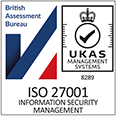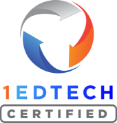Dr Sten Langmann, Lecturer in Management from Edith Cowan University on ‘Formulating Professional Identity in Business.’ This recording is from our 2022 Perth, Australia MiniBash community event. Videos are for educational personnel only and require a live educational email to watch. You can read the video transcript below.
Transcript:
Yeah. Yeah. Thanks, guys. And I’ve got to tell you straight. I’m bricking it, honest. I really am because I feel like such an outlier here. And No, no, I’m telling you straight, an outlier.
Because the reason is, a lot of your presentations Pro. You guys use this to the maximum. Fantastic. I love it. I got a lot of inspiration, but you also have these accreditations. You’ve got the external benchmarks that you guys have to meet. In the business school, we don’t necessarily.
And and that’s That’s the fun of it. That’s the frustration of it. That’s the joy a little bit. What else is it?
The challenge. And today, I want to talk just a little bit about how we use it, especially in one of the first year units that we’re teaching, business, identities, and protocols, And now I want to talk about how PebblePad is exactly — it’s interesting what the slogan says, learning platform, learning journey platform. I want to talk about how we exactly make use of that on a very, in comparison, most likely simple but a very effective level. So And it is really about from a business perspective or organization perspective.
I want to also talk about how PebblePad at the end of the day helps us to make our students world ready. So it’s all about mission and vision. How is PebblePad doing their little part for that? So my presentation What’s this?
Yeah?
Oh, sorry.
I want to answer two key questions today, basically. And the first one is, at the end of the day, our unit runs on understanding students’ professional identities. What that means? How we achieve it?
But the most important question that you might ask yourself, Well, Stan, Why do you use PebblePad for it? There are so many other softwares in the world. Why use PebblePad in the business school that could use anything else? What’s the value add for the students, especially?
So I want to go a little bit into that. Professional identities in our unit are really designed to be reflective, relevant in real world. So when we talk about world ready in the business school, and that’s the difference between industry ready and world ready, Shane, you asked a wonderful question. World ready is looking inwards.
Industry ready is industry. You talk about automobile, healthcare, but world ready means, inwards, what do I have to offer? What is my personality? What is myself?
And we support that, of course, with assignments?
That make use of that teamwork is essential to understand what do I contribute as a team member?
And then, we’re also looking to bring that a little bit together on a simple version into a skills portfolio. This is how the unit is designed At the end of the day, the students should walk in, and often they do. They say, Look, I have no idea what I Who I am? They probably have some sort of idea.
But what is their point of difference? What is their unique selling point? And this is not just relevant. Think business not in terms of corporate, Think business in terms of not for profit voluntary health care. What’s your point of difference as a midwife? What’s your point of difference as a nurse?
Your personal point of difference, not just the point of difference of a nurse. So and that we really going through in thirteen weeks, and we’re actually using PebblePad as a platform for that, believe it or not. And I want to talk a little bit about how we use that platform. And at the end of the day, what’s in it for the students?
So the key is central.
So on a bad day, I have two hundred students on a good day, three fifty, so you have to think a little bit different numbers. So we’re talking volume, guys.
My biggest was six fifty, actually, but that’s a bit of an outlier. So you have to understand we’re dealing with two hundred to three fifty students. It has to be centralised. These students are first years also. They often are the first time in this country. They show up at ECU, and they’ve been here a week. And all of a sudden, they have to understand this.
So what Pebel pad helps us to do, it creates a a space. It creates a space that the students learn very quickly for that, mister safe space. If I lock onto PebblePad, I’m assured everything is there for me. And For two hundred students to three fifty students, that’s a lot of value added, given that there’s other units, other priorities, they have to juggle accommodation, personal lives, work, the sun, you know, kind of free time, it helps them a lot.
And our workbook for that is very simply designed.
As simple how to, I’m going to talk about their pre class activities after, and as well as their workbook. So it’s a very simple resource. Again, a tool to make them look inward.
The point of PebblePad in our unit is not PebblePad. It’s about what it can help students to actually achieve.
And the other thing is, PebblePad helps us keeping things simple and consistent. One tab all the pre class activities, PCR two minces for week two, week three, four, five, six, seven, eight, nine, a student after week three gets into a rhythm.
They understand, okay, all I have to do to be prepared for Stan’s class, I have to do this, whatever it is, and it works very well, so the students don’t fight the technology. They actually make it useful for themselves. No one can say, oh, Oh, stand. I don’t know where it was, and I couldn’t find it, and the other tap is missing. You know, either you have it or you don’t.
And That helps students to be prepared for class to actually engage in class in reflection, in discussion.
That’s the simplicity of it is the value add here for the students.
And of course, the biggest fan I’m sure all of you can relate, I’m a big fan of click ready. That means one click, and I have it. Often times, you have to press this link, then you’ve got to log in, and then maybe the link works, and then you can read it. Right?
In in a business context for students, that just doesn’t work. An industry doesn’t work either. People don’t. You can say, I’ve sent the email, fantastic. I’m getting sixty five emails a day. Fantastic that you sent your email. I have to get through to the I have to get through the noise to the students.
And that’s how it works with PebblePad. I cut through all that noise, through all that canvas, through all that uncertainty, by embedding these things. And I’ve seen you do this a lot better in the nursing school, but I am I’m also trying this year through a workbook, which Chris skillfully has designed for me. So click ready.
And activities are done actually in PebblePad.
But again, the activities are the prep work. The value add done in class is to make these activities useful. But every student in terms of literacy, language, The hurdle here is not high. And what we find is every week with these pre class requirements and the discussions, the students become more confident because point of differences start to form, point of differences start to be encouraged in terms of interaction styles. We always judge people by the way they speak.
That’s a very poor form of judgement.
Because we don’t judge people by the way they think, by how much they think. We always think, oh, a student doesn’t speak the language, so therefore, they don’t think. Turns out, through these activities, students around themselves, students learn about each other to say, hey, Kate is behind the scenes. That’s an interaction style. She actually thinks more than anything.
But your name lady, please? Sorry.
But if Bec knows this about Kate, all of a sudden, I have a communication channel. Back understands why Why does Kate not speak? Not because she doesn’t speak the language.
But because she is different and different different things motivate her. So we actually start to create communication with that, believe it or not. And when you’re on week thirteen, you see different students.
And this is fantastic, and that’s why this click ready helps a lot, because the students can entirely focus inwards.
And not rely almost on PebblePad. Oh, I always have to be there. Does that make a little bit sense?
The other thing is, of course, self assessment and take home, as many of you also talked about, my favorite words take home. You know, what’s the return on investment?
What isn’t it for me? What’s the value I get out of it? And the students start to learn very quickly that the real value they get out of it is not from the platform per se, but from the results, it produces for them.
And to be clear, and this is important, to be clear about those results. And I was just thinking about your wonderful examples of midrifery, and when you ask students, what do you want to be midwife? You know, Do they have a clear answer for that, a clear answer for themselves?
And this is also what we’re pushing through PebblePad in this class students become very clear of what they are and what they aren’t. And once you give students, and this is the beauty of it, once you give students that permission, then they start unfolding, and that you don’t become a teacher anymore. You just sit back and watch it unfold.
And this is again the self assessment accelerates that throughout the thirteen weeks. Finally, of course, What’s the point? You can say, Oh, I’ll stand this fantastic. You could have done this with other activities.
You could have done it with another software, mirror, what else is on the market. Why PebblePad? The key is, it’s a centralised store as Shane, you already said it. Many of you also said it as well.
The centralisation gets access, which is fantastic, but is also very succinct.
That’s the beauty of it. Again, they’re not fighting the technology. They’re using it as a tool.
And the other, the second point, this might sound a bit cliche, equity implications to students’ experience. You know, everybody can say that, but what does it really mean?
For us, in the business school, we have students in other countries, in an online setting, in an on campus setting. How do we keep the same promise across these courts? That’s important from a business perspective. You’re promising world ready. And if world ready is only these people that are here face to face, That’s two thirds of one target market gone, and they will not come back.
So that’s why equity. And believe it or not, a wonderful system for my incarcerated students. When I teach in prisons, it’s a great tool.
But also, public health is beautiful, I’m aware of time, that the outcomes are simply not determined. This is the beauty. Everybody at the end gets different results, but people very clearly, at the end, can tell me, Stan, I’m this person. I’m not that.
Sun, this is my skill But I understand also this is why I need others to support me. I don’t talk about weakness.
I talk about what I can do, and I talk about where I need to support. In management, guys, this single hero doesn’t exist anymore. Everything is teamwork, but it’s important to understand what you add as a team.
And that’s what the students learn. That’s what they can explore. But of course, that then links to other units, and one challenge we have we need to bridge, that is the consistency across units, one of my questions what PebblePad can do there. But at the end of the day, also, it’s the linkage It’s about linking those activities to the student, but also to the mission and vision of issue that they can walk out and say, I’m world ready, because I know my point of difference, I’m world ready to know I’m not the best thing since sliced bread, but I know what I can offer.
Does does that make sense, guys? And that’s what we use PebblePad for. In comparison to healthcare, a very crude way, but the students walk out week thirteen different, but not saying, oh, in week seven, I know I was different. They work out week thirteen, and they say something has changed.
And that’s in my opinion the value of education, what you retain when you’ve forgotten everything. And that’s the value add. Of PebblePad in our class, to make that useful on a very simplistic level.
Make sense? Alright.
I hope I didn’t talk too fast. And I’m sorry, guys, I’m very passionate about this because you see the results, you see students who walk in, they don’t want to speak, you know, they stand there, and all of a sudden, they can tell an organisation, this is who I am.
And they don’t need the skill for you, the skills portfolio printed out to show the manager. It’s all in here.
And I believe the same value it comes with Mid wife free, they can say, look, here’s my skills portfolio. No one cares. They don’t even care. They say, I want to be a midwife, because I want to be part of somebody’s most important memory, you know? And that’s what attracts organisations. That’s what creates employability when you can show I want to be there, not for your money. I want to be there because I have a purpose.
And recruiters are not stupid in the health care, or otherwise, they understand that. They can see who wants to be and who doesn’t. You know? And that’s what we’re trying to instill in the unit through PebblePad.
I hope that makes sense.
Thanks, guys.







